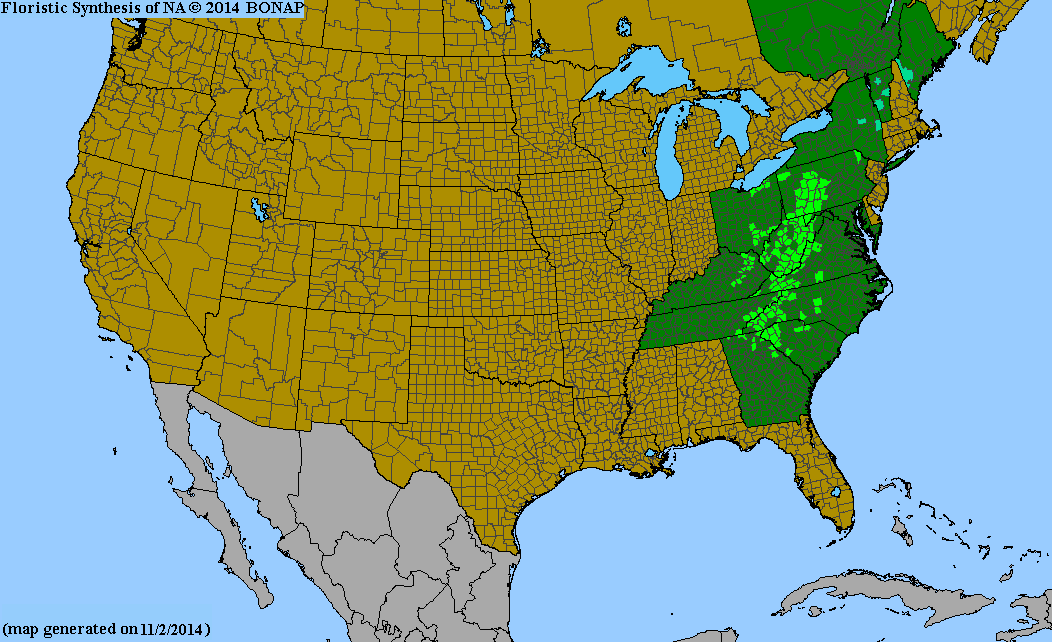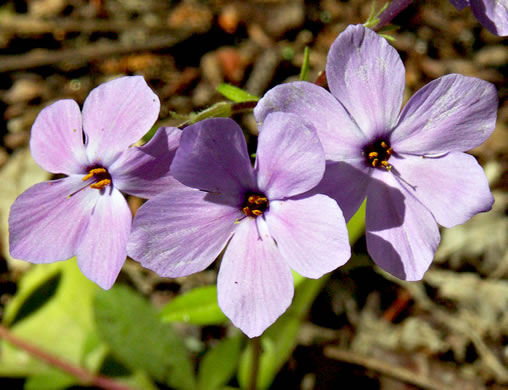Polemoniaceae
creeping phlox
Phlox stolonifera
Plant Type
Herbaceous Wildflower
Life Cycle
Perennial
Typical Size
0.5-1 ft. tall
1-1.5 ft. wide
Tolerant of
Drought
Inolerant of
Poorly Drained Soil
Propagation
By seed, By cutting, By division
Plant Propagation Notes
Softwood cuttings are best for vegetative propagation.
Plant Planting Notes
Creeping phlox may require supplemental watering for the first year, but is quite drought tolerant once established.
Plants/Diseases
Good air circulation is necessary to prevent powdery mildew. Spider mites may be an issue in extremely and dry situations. Slugs can cause issues if the soil is too wet.
Wildlife Benefits
Nectar/pollen source for pollinating insects, Nectar source for hummingbirds
Leaves
Leaves opposite, oblong to ovate with entire margins.
Flowers
Flowers vary from purple to blue to pink to white. Arranged on a cyme with 5 petals in a star shape from a short tube.
Toxicity
No known toxicity.

USDA Hardiness Zones
5, 6, 7, 8
Light Exposure
Full Sun, Part Sun/Shade
Soil Moisture
Dry, Medium
Soil Drainage
Well-drained
Soil pH
Acidic (less than 6.0), Neutral (6.0-8.0)
Native in South Carolina?
Yes
Plant Native Habitat
Mesic forests.
Global Conservation Status (NatureServe)
Apparently Secure (G4)
Federal Conservation Status (USFWS)
Not Listed
Distribution Notes
Rare in the South Carolina piedmont. Uncommon in the mountains. Absent from the sandhills and coastal plain.


